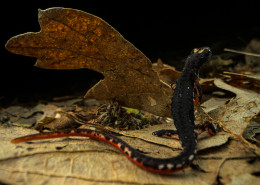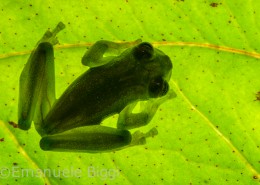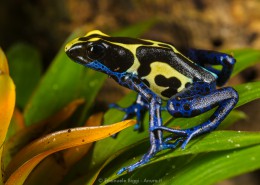I thank Outex and Isotta brands for supporting my under water images work. You’re the best!
– OUTEX
– ISOTTA
Thanks to Laowa for making the probe lens and permitting me to obtain the “watchful male” images with that amazing unique perspective.
– LAOWA
Thanks to Antonio Romano for providing me the scientific papers about mating behavior, so I could write something logic about it.
Thanks to my beloved Elena for being so damn perfect and for enjoying with me long hours and humid nights in search of standing up males and underwater females
The spectacular spectacled salamanders: Salamandrina perspicillata
Italy is home to two species of endemic and unique salamanders: Salamandrina perspicillata and S. terdigitata
There’s one thing that’s sure when Italy is concerned: this bridge over the Mediterranean is a pot full of tasty biodiversity flavors. No matter where you’re looking, you’ll probably be close to an endemic species that cannot be found anywhere else on the planet.
Salamandrina perspicillata, along with the sister species S. terdigitata is surely among the top endemic species that a passionate nature lover could aim to see while visiting this Country.
I follow this species all along the Apennines mountains since when I was a tiny boy and they never stop to amaze me.
At a first, very superficial glimpse, their thin-like-a-matchstick body makes them look as they’re about to die for starvation and the dull, rather uniform coloration is not surely helping them to appear in the top ten of the most beautiful animals. Nonetheless there’s something that suddenly strikes the genuine observer, the one who stops and gives them a second, longer, look.
They’re different.
And this is a driver for my attention for sure.
They’re not sick-skinny at all, it’s just like they were sculpted in a dark matter, with their spine and ribs visible, sure, but with a groovy healthy skin to cover them. They are salamanders, but their dorsal skin is very different from that of other European smooth-skinned Amphibians.
On their head, a clearer patch goes from eye to eye, drawing the “spectacles” that give them their common name.
But the true “spectacle” is below.
The belly is mottled white and brown, which fade into bright red towards the cloaca and the tail, the true warning weapon of this species.
When startled, this species is able to bend its body upward to show this bright coloration on the underside of tail and legs. A behavior called unkenreflex, which they share with other Amphibians like the American Taricha newts or the European firebelly and yello-bellied toads belonging to the genus Bombina.
Aside of their appearance, these species is a shy one, which I normally find on the ground when I flip stones and fallen trees in search for them (please, remember to always put the stones back in place carefully if you do this practice! every flipped stone it’s a open world of animals that like darkness and humidity). But there are two situations, during Spring time, when these Amphibians become very visible, if you find the right spot.
During warmer and humid nights between March and April I found many males on the walking path in the woods where they live. They were all standing high with their front limbs fully stretched, sometimes even standing on a nose-up position, balancing between their hind legs and the tail. This “watchful” and the “stand up” behaviors have been reported by various herpetologists, including my friends Antonio Romano and Giacomo Bruni as a probable method for these salamanders to have a better visual of the surroundings, in search of a partner to mate with or an intruder to pursue and chase away.
In some nights, the males doing these postures were so abundant that I was worried about squeezing one while walking, so I moved very slowly, carefully watching every step I took. If a male is lucky, a female passes by and they interact into courtship circling and if everything goes fine, she’ll eventually take the male’s spermatophore into her cloaca, to fertilize the eggs.
The second and even more glorious situation of massive congregations of Salamandrina visible on the open is when females gather into water to finally deposit the eggs. Sometimes even as early as December, more often around March-April, they silently plunge into the stream’s quieter parts, full of rocks and fallen branches, to attach their eggs to the substrate and give a population a new hope for the future. The pearl-like eggs, protected by their jelly capsules, will then develop and hatch into tiny larvae. In some sites, when I nailed the right time, the laying females where in almost every corner of the small pool, with eggs already everywhere on rocks and branches. It’s an amazing phenomenon to witness, that will only last for a few days or weeks at maximum. After laying their eggs, the females leave the water and resume their terrestrial and very shy life, among leaf litter and underground quarries.
Working to show the life history of this unique species wasn’t easy and it’s a work in progress which will probably never end, since I simply love to go and see them again and again. Every encounter matters and just love to be there with them.
You might also like






























